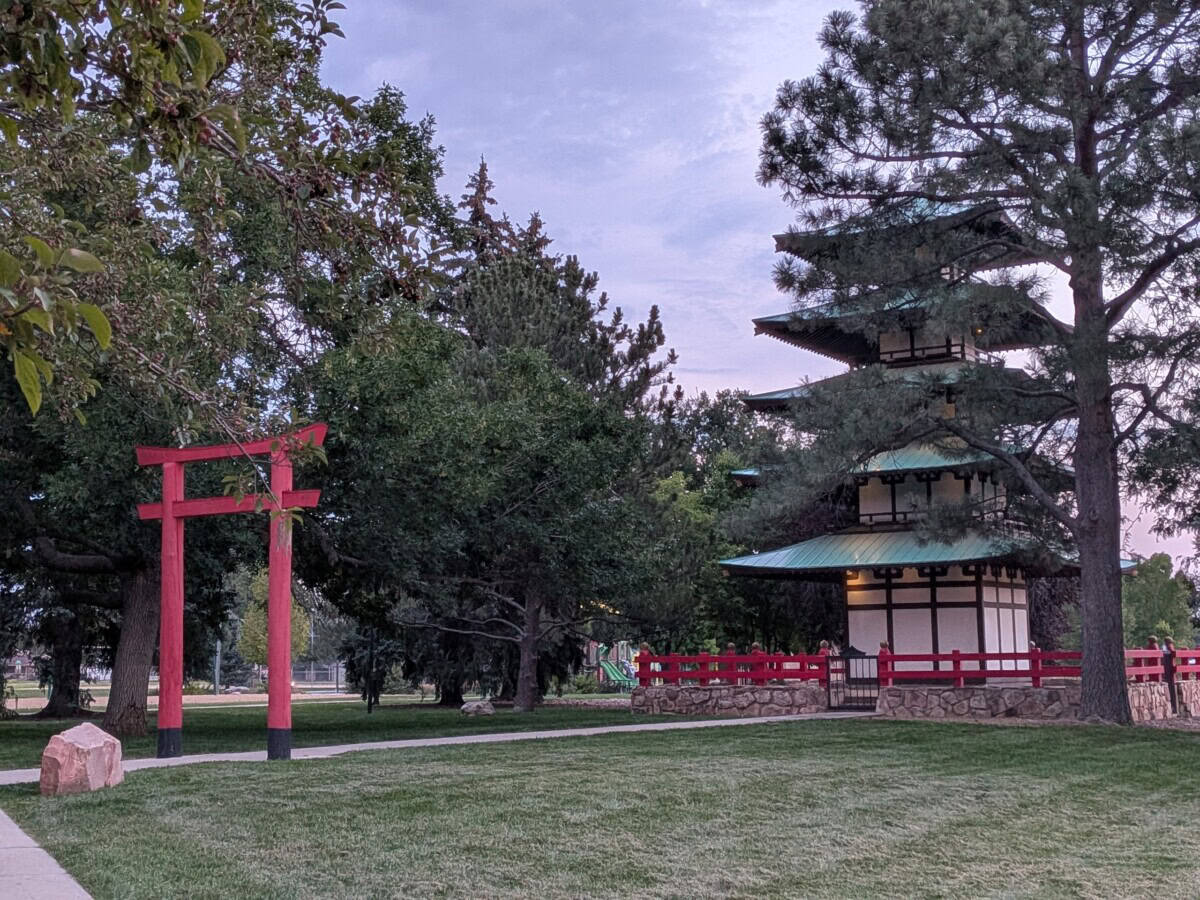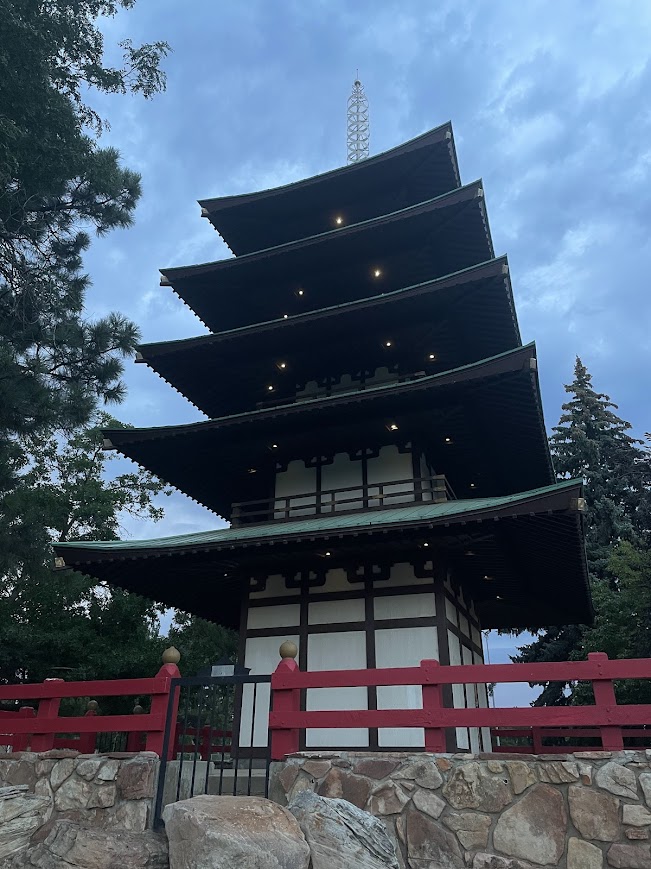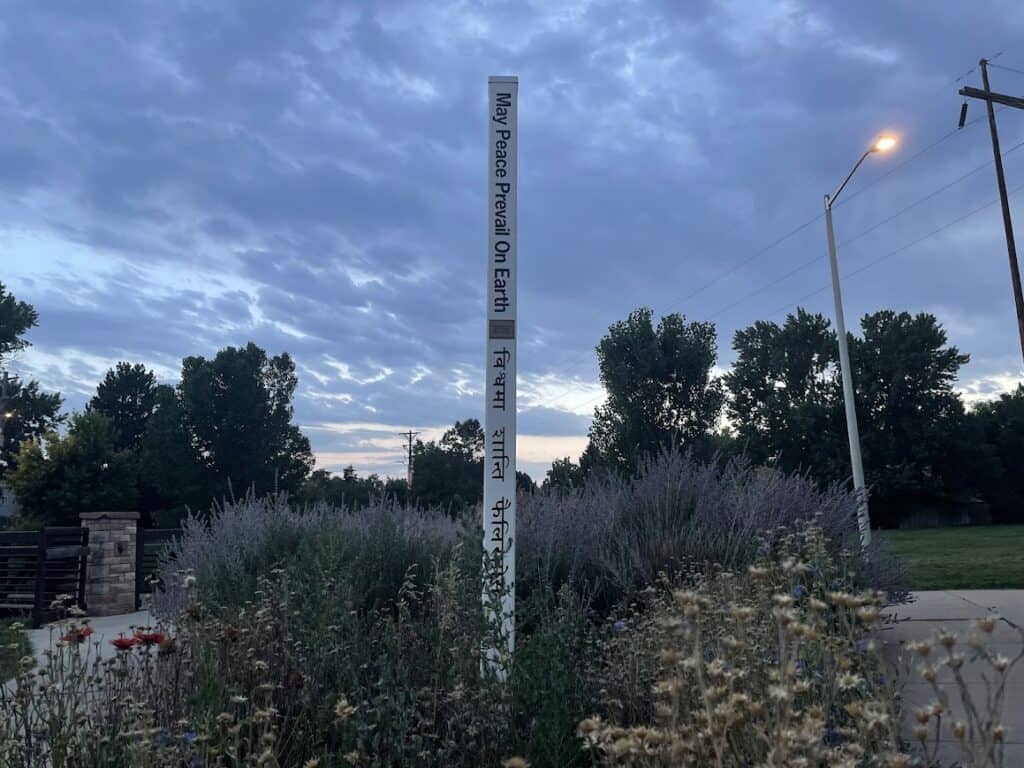The Heartwarming Story Behind Longmont’s Kanemoto Park

Kanemoto Park is a beloved landmark in Southmoor Park Longmont, known for its unique blend of recreation, history, and culture. At its heart stands the Tower of Compassion, a five-story pagoda symbolizing gratitude, kindness, and fair treatment of others.
The park’s story is deeply tied to Japanese heritage and the generosity of the Kanemoto family, whose contributions have shaped the community. Today, it remains a vibrant space where residents and visitors enjoy both its amenities and its rich historical significance.
Origins of the Kanemoto Family in Longmont
In 1908, Goroku Kanemoto left Hiroshima, Japan, for Mexico, eventually arriving in Colorado in 1910. He worked on railroads and in potato and sugar beet fields, saving to lease his own farm.
Goroku married Setsuno Nakasaki, also from Hiroshima, in an arranged marriage, and in 1919 the couple moved to Longmont. They began raising three children, Jimmie, George, and Faith, while building a foundation in farming that would later shape the community.
The family started by renting farmland before purchasing their own property. They launched Freshway Market, selling vegetables and sugar beets, which were processed at the Longmont sugar mill.
This success led to new ventures, including property development and manufacturing, laying the groundwork for decades of community contributions and the eventual creation of Kanemoto Park, a gift to the city that still reflects their lasting legacy.
The Creation of Southmoor Park and Kanemoto Park
In the 1960s, Jimmie and George Kanemoto developed the Southmoor Park neighborhood on land their family once farmed. The project included 700 homes, a shopping center, and apartment complexes. Its location and timing aligned with Longmont’s economic boom, fueled by the arrival of IBM and FAA facilities nearby, creating a thriving residential hub.
Read next: 7 Innovative Tech Companies Thriving in Longmont, CO
Donation of Park Land
In 1966, the Kanemoto family donated seven acres to the City of Longmont for a public park named after Goroku Kanemoto. They also gifted additional land for key community resources, including:
- The St. Vrain Greenway Trail
- Local schools such as Burlington Elementary
- A Buddhist temple and a fire station
This act of generosity established Kanemoto Park as a central gathering place, blending green space, cultural heritage, and civic amenities that continue to serve the community today.
The Tower of Compassion
Commissioned in 1972 and completed in 1973, the Tower of Compassion is a five-story pagoda modeled after traditional Japanese temple architecture.
Each level represents a core value:
- Love
- Empathy
- Understanding
- Gratitude
- Selfless giving
The Kanemoto family built the tower as a heartfelt expression of thanks for the kindness shown by the Longmont community during World War II, a period when many Japanese Americans faced internment and discrimination. Its presence stands as a symbol of cultural heritage, resilience, and shared humanity.

Historic Recognition
In 2024, the tower was officially designated a local historic landmark. This recognition not only honors its architectural and cultural importance but also unlocks preservation grants to ensure its upkeep for generations.
Kanemoto Park Features and Amenities
Recreational Facilities
Kanemoto pool is a seasonal children’s activity pool featuring a fun slide and shallow play areas. The park also offers basketball courts, sand volleyball courts, multi-use sports fields, handicap-accessible playgrounds, shaded picnic shelters, and outdoor fitness equipment for all ages, making it a year-round destination for recreation and family gatherings.
Trails and Scenic Areas
Paved trails connect the park to the Left Hand Greenway and the St. Vrain Greenway Trail, offering easy access for walkers, runners, and cyclists.
The Kanemoto Memorial Cherry Tree Grove adds seasonal beauty, with blossoms noted for their cultural association with life’s impermanence and the value of the present.

Resilience and Restoration
In 2013, severe flooding caused significant damage to Kanemoto Park, impacting its facilities and surrounding landscape. Following a dedicated restoration effort, all amenities, including the pool, playgrounds, and trails, were fully repaired and reopened to the public.
Today, the park continues to thrive as a vibrant gathering place, welcoming residents and visitors alike to enjoy its recreational offerings, scenic beauty, and the enduring spirit of community that has defined it for decades.
Kanemoto Park’s Place in Longmont’s Green Spaces
Among Longmont parks, Kanemoto Park stands out for its rare combination of cultural heritage, recreation, and scenic beauty. While other parks focus solely on athletic activities or open space, this landmark blends history with modern amenities. As part of Boulder County’s many beautiful parks, it offers both a peaceful retreat and a community hub, connecting visitors to nature while honoring the rich legacy of the Kanemoto family.
FAQs
What is the Pagoda in Kanemoto Park?
The Tower of Compassion is a five-story pagoda in Kanemoto Park that symbolizes love, empathy, understanding, gratitude, and selfless giving.
When was Kanemoto Park established?
The park was donated to the City of Longmont in 1966 by the Kanemoto family.
What can I do at Kanemoto Park?
Enjoy the pool from memorial day to labor day, and playgrounds, sports courts, picnic areas, and scenic walking trails year-round.
Where is Kanemoto Park located?
1151 S. Pratt Parkway in the Southmoor Park neighborhood of Longmont, Colorado.
Why is Kanemoto Park historically significant?
It honors the Kanemoto family’s contributions and symbolizes gratitude for community kindness during World War II.







